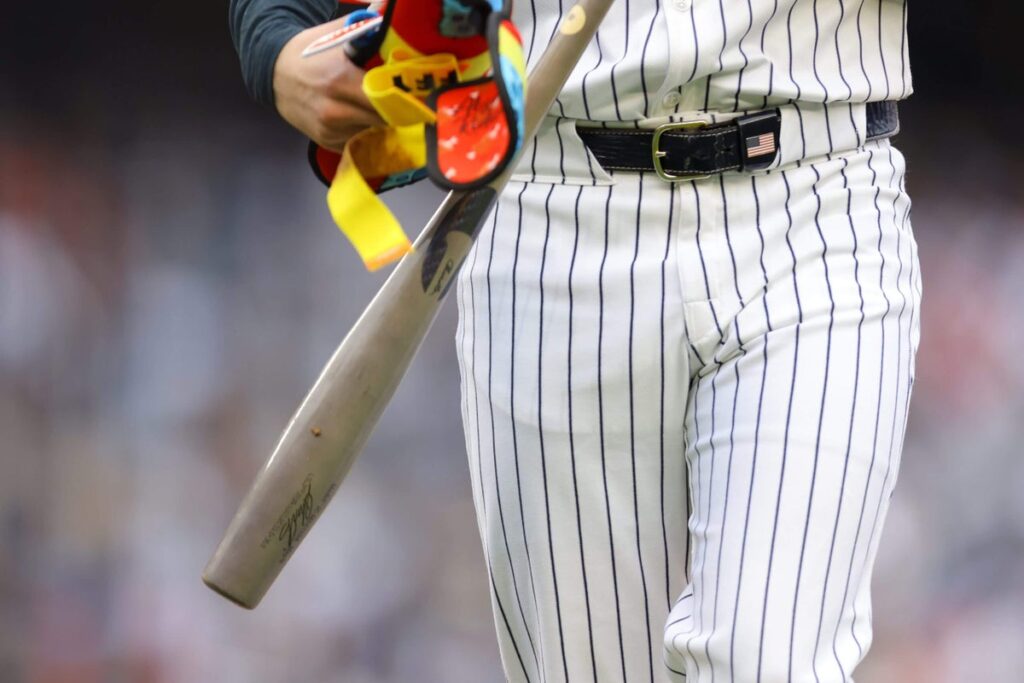
Atlanta Braves first baseman Matt Olson, a two-time All-Star and Silver Slugger, has built his impressive career with a traditional bat. However, even he was intrigued when the New York Yankees recently made headlines with a remarkable display of power, hitting a franchise-record nine home runs against the Milwaukee Brewers. The secret weapon? A new type of bat, dubbed the “torpedo bat,” designed by a former team employee and MIT physicist.
These innovative bats have quickly become the talk of Major League Baseball (MLB) after the Yankees’ explosive performance, which included 15 home runs over three games, tying an MLB record. The surge in home runs has sparked interest across the league, with players and teams eager to explore the potential benefits of the torpedo bat.
The Science Behind the Torpedo Bat
The torpedo bat’s unique design moves more wood into the label area, where players often make contact, effectively shifting the “sweet spot” of the bat. This adjustment aims to increase the number of successful hits, even when contact is slightly off-center. The Yankees’ front office discovered that Anthony Volpe was making more contact in this area, prompting the creation of these specialized bats.
YES Network announcer Michael Kay explained during the Yankees’ game that the harder part of the bat is now positioned to strike the ball, potentially enhancing performance. The results were evident as the Yankees dominated the Brewers with a 20-9 victory, followed by a 12-3 win to complete a sweep.
League-Wide Impact and Reactions
The Yankees’ success has not gone unnoticed, with players and agents across the league expressing interest in the torpedo bat. Los Angeles Angels infielder Nicky Lopez noted that the bats are gaining traction, with teams like the Minnesota Twins, Toronto Blue Jays, and Tampa Bay Rays also experimenting with them.
Chicago White Sox manager Will Venable acknowledged the growing interest, stating that “everyone across the league probably now is going to be looking into using these.” Meanwhile, Detroit Tigers manager A.J. Hinch remarked on the internet’s role in amplifying the bats’ popularity.
“It will get plenty of attention now,” said Hinch. “The internet has a beautiful way of bringing things to be a big deal.”
Historical Context and Development
The concept of the torpedo bat originated with Aaron Leanhardt, an MIT physicist who worked with the Yankees in player development. Leanhardt’s design aimed to increase contact by expanding the barrel area, allowing players to foul off pitches they might otherwise miss. Although initially met with skepticism, the bats have gradually gained acceptance.
San Diego Padres outfielder Brandon Lockridge recalled the early days of the torpedo bat, noting that it wasn’t initially popular. However, Leanhardt’s persistence in promoting the bats has led to their current prominence.
Future Prospects and Considerations
While the torpedo bat is gaining popularity, it may not be suitable for every player. Some, like veteran Philadelphia Phillies hitters, believe traditional sluggers might be less inclined to switch. Additionally, there are concerns about pitchers adapting to the new bats, potentially leading to more end-of-bat contact.
Despite these considerations, the bats remain legal under MLB rules, which only require that the bat be smooth and round, with specific dimensions. Padres infielder Jake Cronenworth, a member of the union’s executive subcommittee, sees no reason not to try the new bats.
“There’s no reason not to try it,” Cronenworth stated.
As the torpedo bat continues to make waves, players like Jazz Chisholm Jr. have already embraced the change. Chisholm, who hit a double and a home run using the bat, believes it provides a psychological edge, offering more confidence at the plate.
The torpedo bat’s rise in popularity represents a potential turning point in MLB, with its impact likely to grow as more players and teams explore its benefits. Whether a passing trend or a lasting innovation, the torpedo bat has certainly captured the attention of the baseball world.







